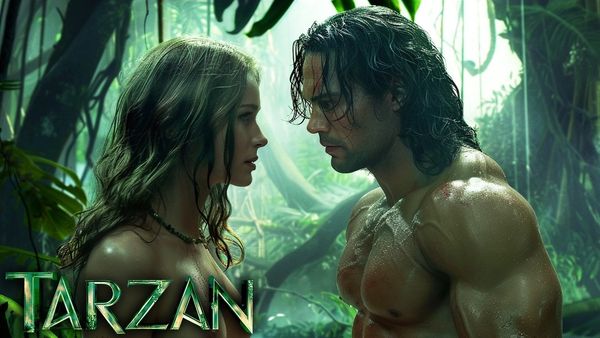Tarzan (John Clayton II, Viscount Greystoke) is a fictional character, a feral child raised in the African jungle by the Mangani great apes

Tarzan, whose full name is John Clayton II, Viscount Greystoke, is a fictional character created by American author Edgar Rice Burroughs. He first appeared in the novel Tarzan of the Apes, which was published in 1912. Tarzan is one of the most enduring characters in popular culture, known for his adventures in the African jungle and his unique upbringing.
Background and Origin
Tarzan is the son of British aristocrats who are marooned on the coast of Africa. His parents die when he is still an infant, and he is subsequently adopted and raised by a tribe of great apes called the Mangani. These apes are depicted as a species distinct from both gorillas and humans, possessing their own language and social structure.
Growing up in the jungle, Tarzan learns to survive in the wild, becoming incredibly strong, agile, and skilled in hunting and tracking. Despite his primitive upbringing, he is inherently intelligent and curious. He teaches himself to read using books left behind by his parents and eventually learns to speak English and other languages.

Character Traits and Abilities
Tarzan is often portrayed as the archetypal noble savage—physically superior and morally pure, yet untouched by the corrupting influences of civilization. His character embodies a deep connection with nature, and he possesses an innate sense of justice and honor. Tarzan’s abilities include extraordinary strength, agility, and acute senses, allowing him to swing through trees, communicate with animals, and engage in hand-to-hand combat with formidable opponents.

Adventures and Relationships
Throughout his adventures, Tarzan encounters various threats and challenges, from wild animals to hostile tribes and unscrupulous explorers. He also becomes a protector of the jungle and its inhabitants, often fighting to preserve the natural world from exploitation.
One of the key elements of Tarzan’s story is his romance with Jane Porter, an American woman who becomes his wife. Their relationship is central to many of the stories, as Tarzan grapples with his dual identity as both a wild man and a member of the British aristocracy.

Cultural Impact and Legacy
Tarzan has been a significant figure in literature, film, television, and comics for over a century. His character has been adapted into numerous films, beginning with silent movies in the early 20th century, and continuing with animated versions, live-action films, and television series. The most famous portrayal of Tarzan is perhaps that of Johnny Weissmuller in a series of films from the 1930s and 1940s.
The character of Tarzan has become a symbol of the wild, untamed spirit and a connection to nature, resonating with audiences across different generations and cultures. Despite the dated and often problematic colonial attitudes reflected in the original stories, Tarzan remains an iconic and enduring figure in popular culture.
Themes and Symbolism
Tarzan’s story often explores themes of identity, the clash between civilization and nature, and the idea of the “noble savage.” His journey from the jungle to the modern world and back again reflects a deep tension between the wild and the civilized, questioning what it truly means to be human.
Through his adventures, Tarzan embodies a romanticized view of the natural world as a place of purity and simplicity, in contrast to the complexity and moral ambiguity of human society. This contrast has made Tarzan a fascinating and enduring character, capturing the imagination of readers and viewers for over a century.











